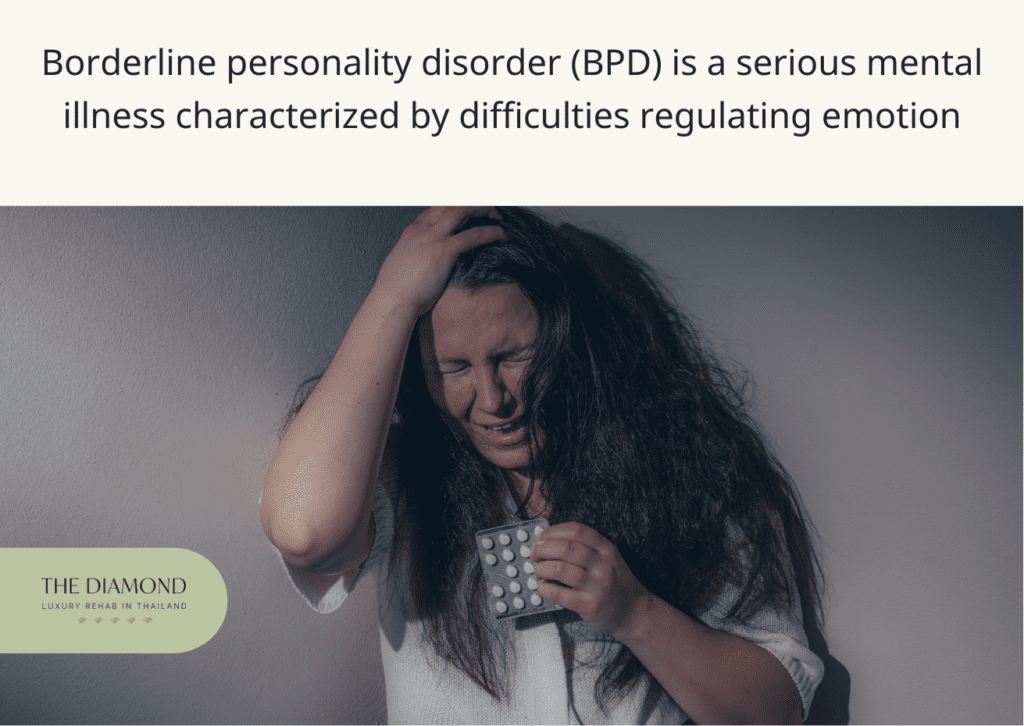Psychodynamic therapy: definition, application, and effectivity
Table of content
- What is psychodynamic therapy?
- How does psychodynamic therapy work?
- Where is psychodynamic therapy used?

Psychodynamic therapy is a type of psychotherapy that is based on the idea that every person’s unconscious thoughts and perceptions are developed throughout their childhood. This type of talk therapy enables patients to focus on unconscious aspects that affect the way they feel and behave.
Through bringing unconsciousness into consciousness, psychodynamic therapy helps people manage their symptoms more effectively. As one of the oldest forms of therapy, psychodynamic therapy puts a strong focus on past experiences.
Applications and uses of psychodynamic therapy are numerous, including the management of depression, anxiety, phobia, panic disorder, anorexia nervosa, pain, borderline personality disorder, and psychopathological issues in children and adolescents.
The effectiveness of psychodynamic therapy is backed by numerous studies, and its benefits are known to remain even after treatment has ended.
What is psychodynamic therapy?
Psychodynamic therapy (PDT) is a type of talk therapy that focuses on unconscious processes as they are manifested in the patient’s present behavior. In other words, it embraces the multifaceted aspects of a person’s life. Otherwise known as psychodynamic counseling, it helps people understand the unknown or unconscious motivations behind difficult feelings and behaviors.
Generally speaking, psychodynamic therapy is a good way to explore the sources of the symptoms and the challenges that people face. It is concerned with the “why” behind actions and thoughts. For example, psychodynamic therapy focuses on questions such as “Why am I feeling this way?” or “Why am I doing what I’m doing?”
Psychodynamic therapy is a broad area that involves various types and techniques. The best examples are short-term or brief psychodynamic therapy, dynamic interpersonal therapy (DIT), psychodynamic art and music therapy, and long-term psychodynamic therapy.
Brief psychodynamic therapy involves seeing a therapist for a limited number of sessions whereas long-term therapy requires a lot more sessions, lasts longer, and is more suitable for patients with severe symptoms of their mental health conditions.
The purpose of DIT is to enable patients to learn how their symptoms relate to specific patterns in relationships and how to work through them. Finally, psychodynamic art and music therapies help patients ease into exploring difficult thoughts and feelings in a safe and creative manner.
While it has similarities with cognitive-behavioral therapy (CBT) in the way they focus on thought patterns, psychodynamic therapy is different in certain ways, too. This kind of therapy is open-ended and excludes worksheets and assignments compared to CBT, which is highly structured and comes with between-session homework.
The origins of psychodynamic therapy are associated with the theories of Sigmund Freud, the father of psychoanalysis. In the period between the late 1890s and the 1930s, Freud developed several psychological theories that were based on his experiences with patients during therapy sessions. Sigmund Freud used the term psychoanalysis to describe his approach to therapy. His books, such as The Interpretation of Dreams (1899) popularized his ideas.
Back in 1909, Sigmund Freund and his colleagues traveled to the United States and gave lectures on the subject of psychoanalysis. The lectures contributed to the popularization of Freud’s ideas. In the following years, psychoanalytic theory and its applications were the subjects of numerous meetings. With his work, Freud was a major influence on some of the most significant psychological thinkers, such as Alfred Adler, an Austrian psychotherapist, and Carl Jung, a Swiss psychiatrist.
Freud was the first person to use the term psychodynamics when he discovered that certain patients exhibited psychological symptoms without a biological basis. Despite their conscious efforts, the patients were unable to stop the symptoms they experienced.
This prompted Freud to conclude that if the conscious will can’t prevent or stop the symptoms, they must arise from the unconscious. Based on his discovery, the symptoms result from the unconscious will of a person opposing the conscious will. The interplay between conscious and unconscious aspects was the basis for the term psychodynamics.
Psychodynamic therapy has evolved significantly since the 19th and early 20th centuries. In the earlier stages, this was mainly long-term therapy. Patients in the past used to have regular sessions for several years. Today, short-term psychodynamic therapy is what’s often used in practice.

How does psychodynamic therapy work?
Psychodynamic therapy works through its main principles. The first principle of psychodynamic therapy is that unconscious motivations (social pressure, psychology, biology) affect a person’s behavior. The second principle is that experience shapes personality, which affects a person’s response to that specific experience.
The third principle is that past experiences affect the present, whereas the fourth principle indicates that developing insight and emotional understanding helps people with psychological issues.
The fifth principle dictates that expanding the range of choices and improving personal relationships helps people address their problems. Lastly, the sixth principle suggests that feeling oneself from the past contributes to a better life in the future.
In psychodynamic therapy, transference and countertransference are incredibly important. Thanks to this approach, the patient transfers their feelings toward other persons to the therapist. Then, the therapist redirects these feelings back to the patient. The exact approach to achieve this varies from one therapist to another. In various cases, the patient is unaware of this approach.
Psychodynamic therapy works to help patients understand their beliefs, feelings, and childhood experiences. The main objective of this type of talk therapy is to empower patients to recognize self-defeating patterns while exploring new ways of being in the world. The therapy aims to help patients feel better.
A strong emphasis in psychodynamic therapy is on the relationship between a therapist and a patient or client. The therapist creates a safe environment where a patient is able to discuss everything without feeling judged or criticized.
In such an environment, it’s easier for patients to gain a deeper insight into themselves, their past, and their feelings. Patients additionally develop a better understanding of the world around them and being in that world.
Where is psychodynamic therapy used?
Psychodynamic therapy is used for the management of a wide array of emotional and psychological problems and conditions. The most common uses of psychodynamic therapy are listed below:
- Depression
- Anxiety
- Phobia
- Panic disorder
- Anorexia nervosa
- Pain
- Borderline personality disorder
- Psychopathological issues in children and adolescents
1. Depression

Depression is a mood disorder indicated by a persistent feeling of sadness, loss of interest, helplessness, and other emotional and physical symptoms, with suicidal thoughts and tendencies being the most severe.
Although a serious condition, depression is manageable. While patients are usually prescribed antidepressants, they’re not the sole treatment method for depression. Psychotherapy plays an important role in the management of depression. Besides CBT, which is often the first-line therapy option for depression, psychodynamic therapy is helpful.
Psychodynamic therapy helps with depression because patients are encouraged to talk freely about everything that’s on their minds. As they do that, their patterns of behavior, feelings caused by past experiences, and unrecognized feelings become more evident.
An article titled, “Psychodynamic Therapy for Depression” medically reviewed by Smitha Bhandari for WebMD explained that psychodynamic therapy focuses on helping a person gain a heightened awareness of the ways in which past experiences and the unconscious mind influence the present.
Focus on past experiences is what makes psychodynamic therapy particularly important. Other psychotherapy approaches, such as CBT, focus on the present without considering past experiences and their importance. Psychodynamic therapy aims to help patients unearth the past to change the present.
Unlike CBT, which is a time-limited therapy, psychodynamic therapy doesn’t necessarily have a time limit. How quickly depression resolves with psychodynamic therapy depends on each patient and their progress. Certain patients feel better after 16 to 20 weeks, whereas others take longer than that.
2. Anxiety
Anxiety disorder is an intense feeling of fear, uneasiness, and dread. It causes a person to sweat, feel tense and restless, hyperventilate, and have a rapid heartbeat.
What makes psychodynamic therapy helpful for persons with anxiety is that it helps people recognize, understand, express, and overcome various conflicts. The therapy helps a person with anxiety deal with repressed emotions in order to resolve their struggles and even improve their relationships.
Irrational thoughts play a major role in anxiety and its severity. In several cases, people aren’t aware their thoughts are irrational. However, these thoughts influence their emotions and behavior.
Psychodynamic therapy works to enable a patient to recognize these patterns of thinking and their unconscious aspects. Bringing the unconscious into consciousness reduces its hold over a person, as per an article titled, “Psychodynamic Therapy for Depression and Anxiety: How it Works” last updated in June 2022 by Psycom. That means the severity of these thoughts that feed anxiety lessens. It becomes easier to manage symptoms of anxiety and improve one’s quality of life that way.
A 2014 meta-analysis paper by Keefe et al., in Clinical Psychology Review showed psychodynamic therapy has demonstrated comparable effectiveness to other active therapies examined for anxiety disorders.
In addition, it’s useful to mention that chapter 42 of the book titled, “The Wiley Handbook of Anxiety Disorders” published in 2014 by John Wiley & Sons, Ltd. stated that psychodynamic therapy was superior to supportive therapy in anxiety management.
Since psychodynamic therapy isn’t time-limited, there is no specific rule regarding the duration of therapy for all patients with anxiety. In most cases, patients need six to eight months to recover, but others possibly need more than that.
3. Phobia

Phobia is a type of anxiety disorder indicated by excessive and persistent fear of an object or situation. A person with phobia usually has an irrational fear i.e., the fear is out of proportion to the level of threat the object poses. In most cases, phobias include things or situations that are generally harmless.
Since phobia tends to be debilitating, especially when left unmanaged, treatment is necessary. Therapy is the most common treatment approach. Patients with phobia usually need CBT and exposure therapy. Psychodynamic therapy is rarely used for the management of phobia unless it co-occurs with other psychiatric conditions.
Psychodynamic therapy works for the management of this type of anxiety disorder by exploring past traumatic events to increase a person’s awareness of the symbolic nature of phobia. For instance, a patient becomes aware that their phobia is linked to aggressive or sexual impulses.
One of the main goals of psychodynamic therapy in the treatment of phobia is to both expose and decrease unconscious psychological conflicts. In doing so, patients gain greater conscious control.
A randomized controlled trial by Salzer et al., published in the June 2018 issue of Psychotherapy and Psychosomatics found that the effectiveness of psychodynamic therapy for the management of social phobia was close to the efficacy of CBT.
Psychoanalytic theories suggest that phobias result from the complexity and challenges of the human experience, which lead to conflicts, traumas, and complexes.
Freud’s psychoanalytic theory of phobia proposes that people have unconscious impulses or thoughts causing conflict between three parts of the human personality. These are the id, ego, and superego. When they’re at odds, the ego attempts to moderate the conflicting goals through coping and defense mechanisms. Displacement and repression are among those coping mechanisms.
The latter includes blocking a threatening memory or idea, whereas displacement is an unconscious act of projecting the anxiety of repressing an idea, event, or memory onto another situation or object. For example, snakes, mice, spiders, and public speaking. This leads to specific phobias.
By enabling a patient to identify unconscious conflicts and take into consideration their past, psychodynamic therapy helps treat the phobia.
How long it takes for PDT to work for patients with phobia depends on the severity of the phobia and how they respond to the therapy. Certain people need a year of consistent work and effort to recover, others longer.
4. Panic disorder
Panic disorder is a type of anxiety disorder where a person regularly has sudden attacks of fear and panic that triggers severe physical reactions. There is no real danger or apparent cause that justifies that level of panic. Certain situations trigger panic attacks.
Psychodynamic therapy is widely used for helping patients with panic disorder. Evidence shows that panic-focused psychodynamic psychotherapy is effective for panic disorder. In fact, according to a 2008 article written by Fredric N. Busch and Barbara L. Milrod for Psychiatric Times, individuals with panic disorder frequently have angry emotions and thoughts that they perceive as endangering significant attachment figures.
Patients are typically conscious of certain angry emotions, which they often find unpleasant, while other subconscious angry or vengeful thoughts that are more difficult to bear surface throughout therapy.
The goal of treatment is to understand the significance and nature of panic attacks. It additionally seeks to provide more insight into past panic episodes and developmental history. Psychodynamic treatment is also helpful in identifying early life events and other relevant aspects that contribute significantly to panic. To put it another way, the therapy addresses relapse and panic vulnerability while further helping in symptom reduction.
Patients who receive panic-focused PDT usually need 24 twice-weekly sessions to notice an improvement in their panic disorder. Standard PDT takes more time.
5. Anorexia nervosa

Anorexia nervosa is a type of eating disorder indicated by abnormally low body weight and intense fear of gaining weight. People with anorexia nervosa have a distorted perception of weight. They put a lot of effort and place a high value on controlling their weight and shape. At times, these efforts are extreme and have a major impact on their health and quality of life.
When left unmanaged, anorexia leads to various complications including death. Patients with anorexia nervosa benefit from therapy such as PDT. Psychodynamic therapy works for the management of anorexia nervosa by enabling patients to identify the start of their eating disorder. Most patients don’t have awareness that their behavior patterns aren’t new.
They often don’t realize that past experiences acted as a catapult that led to the development of this eating disorder. By understanding the start of anorexia was somewhere in the past, patients get more insight into the origins of their problem, behaviors that ensued, and how to end them.
Psychodynamic therapy is an effective strategy for revealing a patient’s defense mechanisms. A common defense mechanism is denial, which is why numerous people with anorexia refuse to acknowledge the presence of a problem. Through the identification of an individual’s defense mechanism, its intensity reduces. That way, it becomes easier to confront the true problem and recover from anorexia.
The therapy typically takes 20 sessions to work or more, depending on the patient. Remember, psychodynamic therapy isn’t structured in the same way as other therapies. In most cases, there is no set rule regarding the number of sessions that suits every patient with anorexia nervosa.
6. Pain
Pain is an unpleasant sensory or emotional experience linked to acute or potential tissue injury i.e. tissue damage. Generally speaking, pain is a signal in the nervous system that something is wrong. Various health conditions, injuries, accidents, and other factors can lead to pain. The intensity of pain ranges from mild to severe. Sometimes the pain is short-term i.e., acute, but in other cases, it’s long-term or chronic. Chronic pain can take its toll on a person’s mental health and overall quality of life as it impairs their everyday functioning.
Chronic pain is particularly tricky to deal with because it keeps coming back, and a person may lose hope in ever getting better. Taking medications isn’t always enough, which is where therapy steps in. Psychodynamic therapy can help patients with psychic comorbidity and individuals with somatoform pain disorder (chronic pain without an apparent physical cause).
Based on psychoanalytic theory, conversion symptom formation could contribute to pain. Childhood trauma and adverse attachment experiences can have a significant influence on the mind-brain-body complex. For that reason, psychodynamic therapy can be integrated into chronic pain management. During therapy sessions, patients learn to link pain with emotional trauma and pathologic internal object relations. That way, they symbolize pain, discover multiple meanings behind it, and make significant life changes resulting in reduced intensity of pain.
How long it takes for psychodynamic therapy to manage pain depends on the severity of chronic pain and the patients themselves. In some cases, eight to 10 sessions are necessary, but most patients need more than that.
7. Borderline personality disorder

Borderline personality disorder (BPD) is a serious mental illness characterized by difficulties regulating emotion. The lack of emotional control increases impulsivity and affects how a person feels about themselves. A borderline personality disorder affects relationships and increases the chance of risky behaviors.
Therapy plays an important role in the management of borderline personality disorder. Some of the first treatments for BPD relied on approaches that focused on unconscious processes, attachment style, and defense mechanisms. In the treatment of BPD, psychodynamic therapy works by helping patients become better able to “mentalize,” and it encourages them to explore their views of self and others in ways that they can gain more meaning and understanding. The therapy also ensures patients gain insight into their interactions with other people on the basis of interaction with the therapist.
Since patients with personality disorders such as BPD tend to use defense mechanisms such as denial, projection, and splitting, PDT helps them develop less dysfunctional strategies to handle negative stimuli. Not only is psychodynamic therapy beneficial for managing symptoms of BPD, but it can also reduce the risk of suicidality, Psychology Today reports.
Psychodynamic therapy for the treatment of BPD aims to identify and alter pathological relationship paradigms that usually originate in patients’ families, especially in primary attachment relationships. The main purpose here is to act on a patient’s fear of rejection, abandonment, and victimization in order to help manage symptoms of BPD and improve everyday functioning.
When it comes to the treatment of borderline personality disorder, psychodynamic therapy also puts a strong emphasis on self-destructive and manipulative behaviors that patients use to regulate emotions. At the same time, PDT is concerned with conscious or explicit strategies for affect regulation i.e. coping.
Compared to other types of therapy, PDT allows for a stronger therapeutic relationship between a therapist and a patient. Patients are more likely to express their problems in intimate relationships as they form a more interpersonally meaningful relationship with a therapist over time.
Psychodynamic therapy in the treatment of borderline personality disorder can take around nine months to show true effects, but a more specific timeframe varies from one patient to another.
8. Psychopathological issues in children and adolescents
The term psychopathological issue refers to mental disorders and unusual or maladaptive behaviors. In children and adolescents, the most common illnesses of this kind are anxiety, attention, mood, and behavior disorders. Good examples are attention deficit hyperactivity disorder (ADHD), conduct disorder (CD), oppositional defiant disorder (ODD), Tourette syndrome, obsessive-compulsive disorder (OCD), posttraumatic stress disorder (PTSD), anxiety, and depression.
How psychodynamic therapy works for the management of psychopathological issues depends on the specific condition. According to a paper from Frontiers in Psychology, psychodynamic therapy is particularly effective for internalizing disorders such as anxiety and depression, but it is also effective for the management of emerging personality disorders in children and adolescents.
Psychodynamic therapy in the treatment of psychopathological issues in children and adolescents works because it focuses on how early childhood and relations with others can influence someone’s development. The therapy is based on the theory that the unconscious holds onto painful memories and feelings that the conscious mind finds too difficult to handle and process. Many children and adolescents develop defense mechanisms such as denial. The main purpose of these defenses is to hide painful memories and feelings from oneself.
During psychodynamic therapy sessions, the unconscious mind is brought into the consciousness. As a result, a child or an adolescent can experience and understand their deep-rooted feelings. The more they understand, the less power those feelings or memories have. In turn, the symptoms of their condition decrease.
With psychodynamic therapy, children and adolescents learn to adapt, become more resilient, and have a chance to live healthier lives.
How long it takes for psychodynamic therapy to work for psychopathological issues in children and teens depends on each patient. A minimum of 12 sessions up to one year of PDT is necessary in most cases.
What is the process of Psychodynamic therapy?

The process of psychodynamic therapy isn’t as structured as in other therapies such as CBT. There is usually no specific rule or timetable to which all sessions adhere.
The main focus of the therapy is on the discussion. Patients engage in open-ended discussions with their therapist instead of following a structured plan on a weekly basis. The patient talks freely about everything that’s on their mind while a therapist guides them through the process.
Psychoanalysis sessions usually involve a patient lying on the couch, but it doesn’t happen with PDT. Instead, patients sit on the couch or in an armchair during the sessions, like they do in other therapies.
The therapist may interrupt a patient to ask questions or redirect the discussion. However, they don’t give opinions on what patients say. In other words, the therapist remains neutral at all times. That way, the relationship between therapist and patient becomes stronger. The patient gets more confident to speak freely. Things are a bit different in short-term psychodynamic therapy. Emerged after the 1950s, short-term psychodynamic therapy involves a more active role of a therapist. In this case, the therapist is not just a neutral observer but an advocate for positive change.
During the sessions, patients usually discover feelings and emotions that they weren’t aware of before the therapy. It helps them identify patterns of feelings and behaviors and how the past influences the present.
Other forms of therapy, such as CBT, usually involve homework and assignments that patients need to do between sessions. The purpose of homework is to practice skills that patients learned during the therapy. Psychodynamic therapy doesn’t include homework and other assignments.
How many sessions are required for Psychodynamic therapy?
How many sessions are required for psychodynamic therapy varies from one person to another. Brief or short-term psychodynamic therapy focuses on helping patients see results in 25 to 30 sessions. It typically takes six to eight months to complete this therapy. However, long-term psychodynamic therapy can last 50 sessions or longer and take over a year to finish.
Dynamic interpersonal therapy usually requires 16 sessions, whereas the number of sessions for other types isn’t fixed, it can depend on several factors. Whether the therapist recommends brief or long-term therapy depends on the patient’s individual needs.
How is Psychodynamic therapy done?
Psychodynamic therapy is done through regular sessions with individuals, couples, and families, as well as in group therapy settings. Since the primary focus of PDT is on relationships and understanding feelings and thoughts that people have avoided, it can be time-consuming. A typical session usually lasts around 50 minutes and occurs one to two times a week. The therapist determines the frequency and duration of sessions based on the patient’s condition, symptoms, and other factors.
To help patients understand what their unconscious disturbances are and how their mind works, the therapist uses similar techniques used in psychoanalysis and psychoanalytic therapy, such as therapeutic transference, interpretation, and free association.
The latter is a technique that involves talking freely to the therapist, while therapeutic transference is the redirection of feelings for a significant person, particularly those unconsciously retained from childhood, onto the therapist. Interpretation is quick, solution-focused, and helps a patient learn new patterns of behavior and thinking to support personal growth and development.
The approach a therapist chooses is navigated toward achieving goals such as making mindful choices, getting free of the past, and improving relationships.
What does a Psychodynamic therapist do?
The psychodynamic therapist works closely with patients or clients to help them find patterns in their thoughts, emotions, and beliefs so they can gain a closer insight into their current selves. A psychodynamic therapist needs to have a proper educational background and relevant experience to use psychodynamic therapy to help patients. There are many training and certification programs in contemporary psychodynamic theory and various techniques that mental health professionals attend to provide a better quality of care.
The psychodynamic therapist has numerous roles. They include establishing a model of what a healthy relationship looks like and creating a supportive environment wherein a patient can share anything that comes to mind. These include difficult feelings and experiences, as well.
Additionally, the psychodynamic therapist helps patients explore and question their worldviews and examine their dreams and fantasies. Most importantly, the psychodynamic therapist works with patients to develop constructive ways to handle their emotions and challenging situations, Psych Central explains.
The psychodynamic therapist should have a wide spectrum of skills that allow them to implement this type of therapy in a way that helps patients the most. These include active listening skills, communication skills, critical thinking and problem-solving skills, empathy skills, flexibility skills, and others.
The most interesting thing about psychodynamic therapy is that a therapist is a different person to each patient in therapy. This is all due to the abovementioned transference. A person’s view of the therapist is based on years of personal experiences and situations, even though they may not realize it at all.
Is Psychodynamic therapy effective?

Yes, psychodynamic therapy is effective, and numerous studies and therapists have confirmed so. For example, research published by the American Psychological Association confirmed PDT is effective for various mental health symptoms, including depression, anxiety, panic, and stress-related problems. The benefits of psychodynamic therapy grow after the treatment has ended. The same study shows psychodynamic therapy yields positive benefits through a strong emphasis on self-knowledge.
People are told nowadays that only newer therapies, such as CBT, are effective for the management of various mental health problems. As one of the oldest psychotherapies around, psychodynamic therapy is highly effective. This type of therapy sets in motion psychological processes that lead to ongoing change even when a patient completes all sessions. At the same time, the benefits of many other therapies tend to diminish eventually.
The main reason behind the long-lasting effects of psychodynamic therapy is that it puts a strong focus on the unconscious aspects of the mind and a person’s past. By doing so, the therapy allows patients to learn more about themselves, which can contribute to their recovery. Additionally, psychodynamic therapy isn’t time-limited but open-ended. It doesn’t strive to finish sessions in a short timeframe. Patients may need to attend sessions for one year or more. For that reason, their mental health functioning becomes stronger. This explains why the benefits of other therapies tend to decrease over time.
A review of evidence from The World Psychiatric Association on this subject revealed that psychodynamic therapy benefits persons with depression, anxiety, eating disorders, and somatic problems. Long-term treatments are beneficial for people with complex disorders. However, a lot more research is necessary to compare the effectiveness of short- and long-term interventions to find out which one is better for long-term effects.
Medical News Today reports that psychodynamic therapy is effective for addressing recurrent life patterns in patients with depression. The effectiveness of psychodynamic therapy also extends to treating social anxiety and panic disorder as well as improving remission. The therapy improves a person’s life by strengthening self-understanding to break self-defeating cycles and it also allows people to address avoidance issues.


